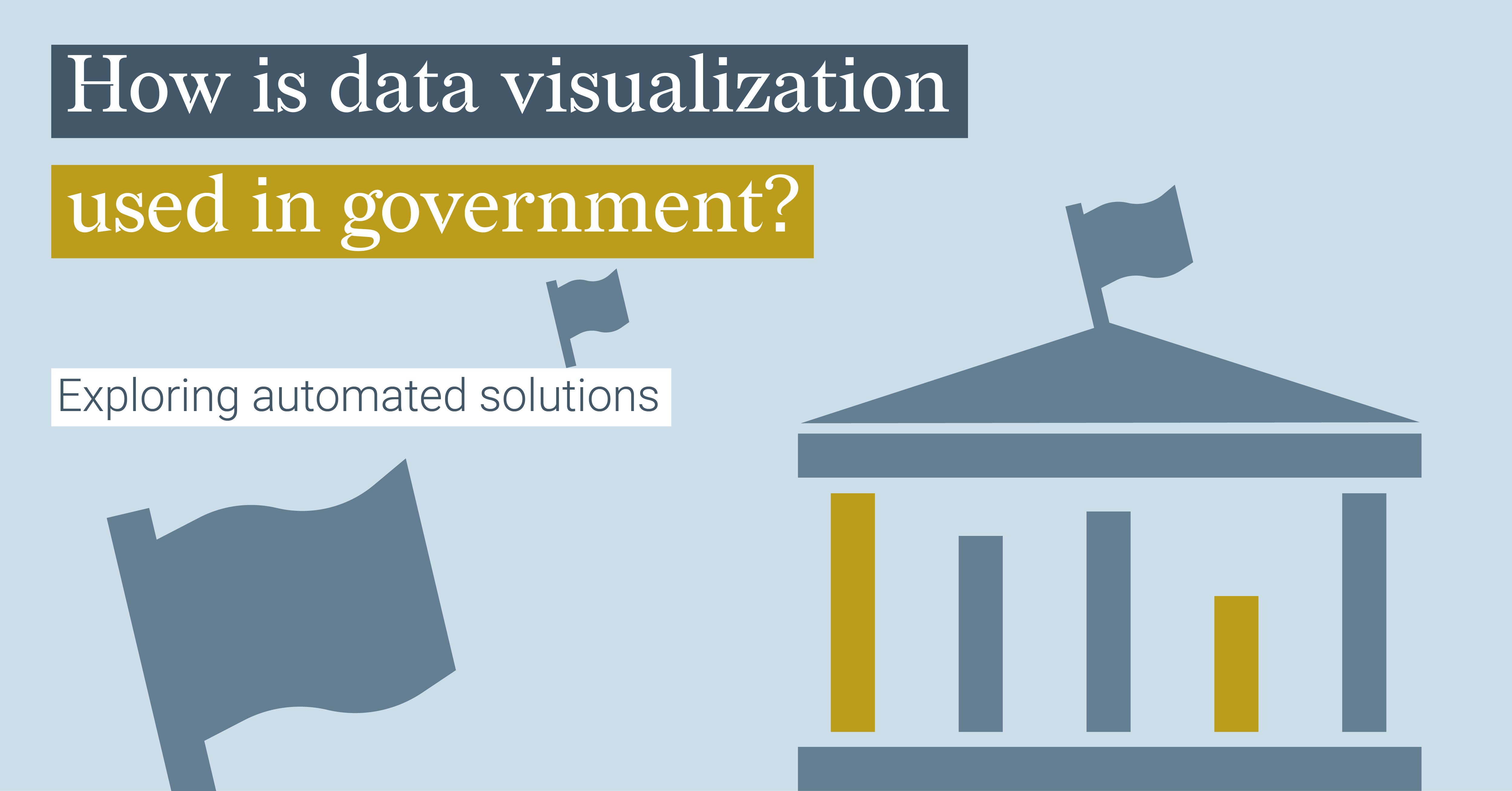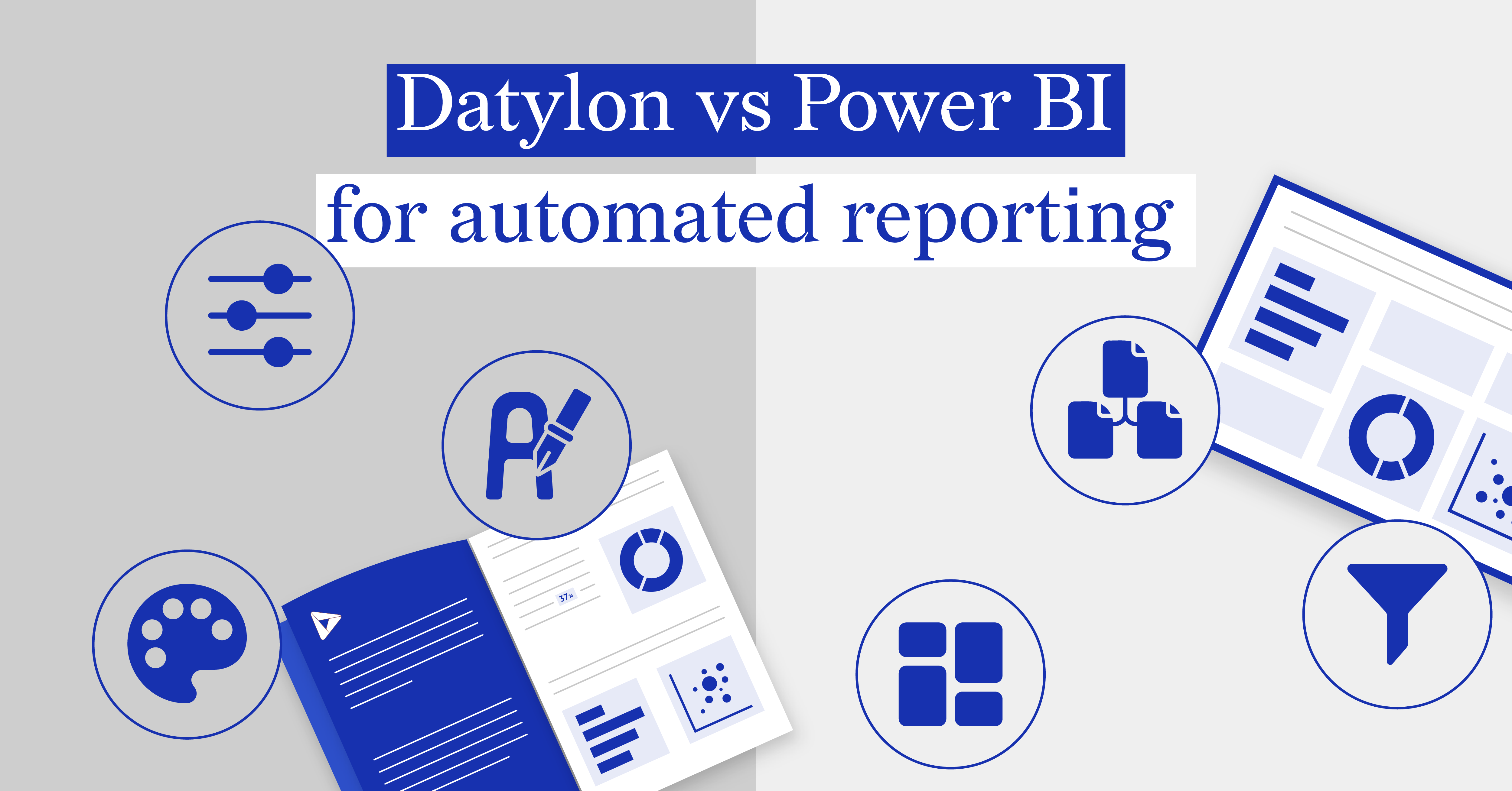Mastering Versioned Stand-Alone Reports
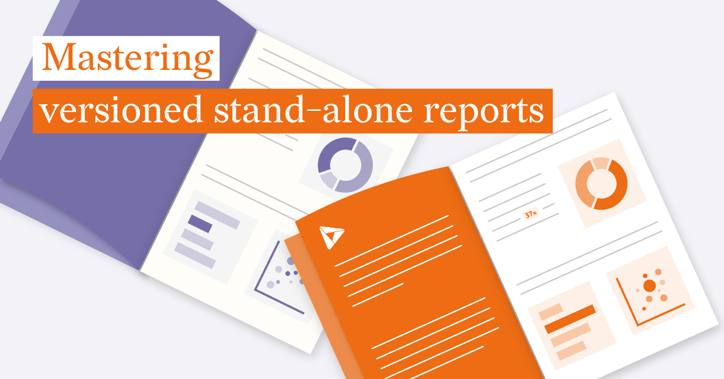
In the world of data reporting, versioned stand-alone reports occupy a special niche. They are a less common type of report, usually reserved for one-time or infrequent projects. What sets them apart is that within a series of related reports, each maintains a consistent format and storyline, while simultaneously adapting to present tailored data for the same core subject.
Often spanning over many pages, these reports present not only a lot of data but also a captivating story woven through a complex layout full of text, illustrations, images, graphs, and/or maps. While the versions of the report have the same format, the data values within, particularly in charts, graphs, and maps, are tailored to suit specific contexts.
These reports prove invaluable in various real-world scenarios, such as producing localized reports for international organizations or creating reports related to urbanization in cities, municipalities, provinces, or countries.
Versioned stand-alone reports offer a way to provide customized insights for various locations, industries, or scenarios, enabling businesses to adapt and cater to the unique needs of different regions or market segments.
In this blog, we'll take a deep dive into versioned stand-alone reports. We'll cover the challenges you might encounter when dealing with them, what the data often looks like, and what tools you can use to create such reports.
To make things more concrete, we'll follow a single project as an ongoing example throughout this blog, helping you grasp these concepts in a real-world context. This project, named the Woonscan project, was carried out for the Province of Antwerp as our client, and it involved the creation of 69 unique report versions, each tailored to a specific municipality. The Woonscan report primarily delves into the existing housing landscape within the province, serving as a resource for informed decision-making regarding future housing initiatives.
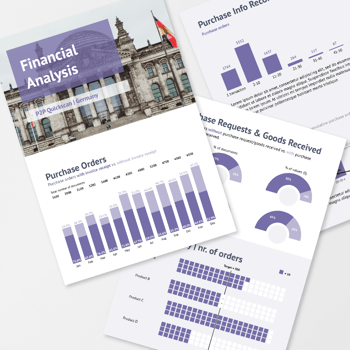
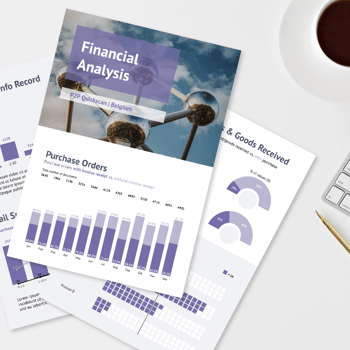
Example of a localized versioned stand-alone report for Belgium and Germany
Table of contents
2. Challenges
3. Database 4. Conclusion |
Tools and resources
Creating versioned stand-alone reports comes with substantial challenges, often due to their extensive length, and the necessity to generate multiple versions. Crafting these customized versioned stand-alone reports manually, with data input by hand, is undoubtedly a labor-intensive undertaking. Nevertheless, this hands-on approach affords significant design freedom and the potential for extensive customization.
A variety of tools are available for manual report creation, encompassing widely adopted options like Microsoft Word and Google Sheets, as well as more advanced solutions such as Adobe InDesign. For those in search of pre-designed templates, platforms like Canva provide valuable resources.
It's vital to recognize that while manual creation offers design flexibility, it can be time-consuming and, as a result, costly. The commitment of both effort and resources for extensive manual report generation can be substantial.
Conversely, some software tools are specifically designed for automated reporting, prioritizing efficiency but potentially providing limited styling choices for report design. The union of automated reporting with extensive styling options is a rare find.
This is where Datylon's Automated Reporting solution excels. Datylon provides an efficient and cost-effective approach, streamlining the production of personalized versioned stand-alone reports and eliminating the need to create each report from scratch. Datylon empowers you to create visually stunning and compelling reports, streamline your production processes, realize cost efficiencies, and seamlessly embed reports into your software or application, should you desire.
Datylon’s Automated Reporting solution was used for the Woonscan project as well. Herewith we could automate the process and make it a less time-consuming process. However, it also came with other challenges.
Challenges
Generating automated versioned stand-alone reports presents numerous challenges, and our experience during the Woonscan project provided valuable insights into these hurdles.
Discover additional details and insights about this project by taking a closer look at the testimonial we wrote.
Working in teams and managing the project
Working in teams and managing an automated stand-alone versioned report project, as we did with the Woonscan project, is a complex undertaking that involves a variety of challenges. When collaborating with individuals in different roles, such as the project manager, data visualization designer, data visualization specialist, map specialist, developer, and quality assurance specialist, it's crucial to establish a structured framework and clear rules.
We learned that this includes the creation of style guidelines for the report, good data management to prevent multiple data versions, and the efficient management of multiple report versions.
Moreover, creating these types of reports often necessitates the use of various software tools that must be skillfully integrated to produce a cohesive final product. Managing the entire process can be overwhelming, given the extensive nature of these reports. To address this, we worked in a phased approach. Working chapter by chapter helped us maintain an overview and promoted the reuse of assets like maps, charts, and illustrations. Clear communication within the team is vital to ensure everyone is on the same page (pun intended).
Additionally, a recurring question in the project was whether to follow internal design decisions that seemed logical and aesthetic or to wait for customer feedback. Striking the right balance between staying true to the initial plan and accommodating customer preferences can be challenging. The design decisions need to align with the customer’s expectations and needs, ultimately leading to a successful project outcome.
Another issue that arose was the impact of design decisions made too late in the process, which can be hard to implement without derailing the project. The ability to stick with the initial plan while addressing evolving requirements remains a constant challenge in the creation of versioned stand-alone reports. One helpful piece of advice is to establish a clear change management process. This ensures that any late design changes are thoroughly evaluated for their impact on the project's timeline and resources.
Layout of report
When crafting the layout of an automated stand-alone versioned report, several critical factors come into play. Primarily, it's crucial to tackle the challenge of extensive page counts, as stand-alone versioned reports often span a considerable number of pages. This substantial length necessitates a thoughtful approach to maintain consistency in styling for all elements in the report. This consistency extends to colors, fonts, and layout, ensuring a cohesive visual identity. To further enhance the report's structure, we advise maintaining consistent margins for various combinations of elements and using grids to establish this.
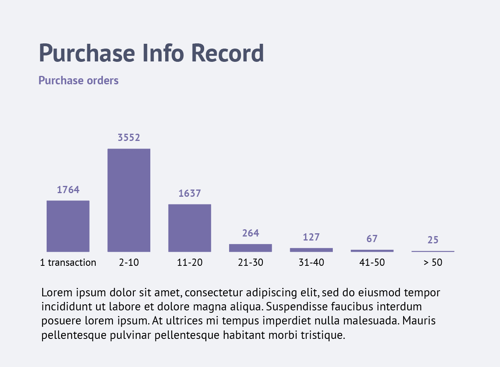
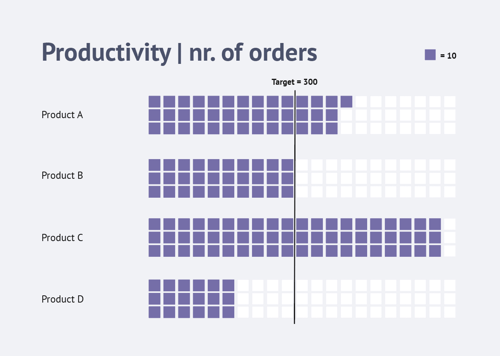 Consistency in styling for all elements: fonts, colors, and layout
Consistency in styling for all elements: fonts, colors, and layout
The challenge of large page counts becomes particularly pronounced when different versions of the report contain varying numbers of pages. This discrepancy can complicate the process and is a scenario that may arise in other projects as well. Keeping this in mind throughout the project is invaluable to address such discrepancies effectively.
Additionally, it's noteworthy that changes made in the initial sections of the report can have a cascading effect, shifting other content and potentially impacting the report's overall structure. Keep this in mind when deciding on design changes later in the project.
Another consideration is whether the report is designed for online or print consumption. This decision influences not only color mode choices (CMYK or RGB) but also the layout, with spreads becoming relevant in the context of print rather than single-pagers tailored for online viewing.
Thus, striking the right balance in automated stand-alone versioned report design requires careful attention to these multifaceted considerations.
Recurring elements
In an automated versioned stand-alone report, creating recurring elements such as charts, maps, and text that can be linked to a database is a fundamental practice (read more about database challenges in the next paragraph). This approach allows for the automatic updating of data in each version of the report, ensuring data accuracy and consistency. However, when designing these recurring elements, several considerations come into play.
Firstly, designing various types of charts while maintaining consistency throughout the extensive document can be quite challenging. With numerous pages and different data sets, ensuring a cohesive and uniform visual language across all charts and maps is essential.
Another aspect to watch for is data labeling within charts and maps. Overlapping data labels can create confusion, so it's crucial to manage this effectively. This includes avoiding the overlap of multiple data labels and ensuring that data labels do not obscure chart elements, maintaining clarity and readability. To address this issue, one possible solution is to employ a transparent background for the label, which enables the visibility of both the label and the chart elements simultaneously.
Additionally, when text is linked to data, it's important to ensure that the text always fits within the allocated space. Keeping in mind the longest potential text value for the data helps maintain readability and aesthetics.
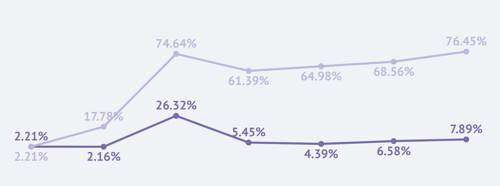
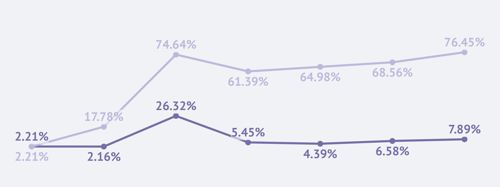 Line chart with overlapping data labels and possible solution
Line chart with overlapping data labels and possible solution
Lastly, maintaining a consistent look for charts and maps with different data values is a critical aspect of effective report design. This consistency ensures that the report remains visually coherent and easily digestible for the reader, even as data changes from one version to another.
Data challenges
Data challenges is a core facet of managing versioned stand-alone reports effectively. To ensure a reliable and accurate report, it's imperative to establish well-defined rules for data management. Without clear guidelines on how to use and update data, the risk of encountering multiple, inconsistent data versions becomes a pressing concern, potentially compromising the integrity of the entire project.
One common data challenge pertains to differences in data, often manifesting as empty data cells or irregularities in datasets. Effectively addressing these variations requires careful consideration and potentially necessitates the formulation of protocols for handling such instances.
Another aspect of data management involves the rounding of data. Maintaining consistency in rounding practices is essential to ensure that even when data values differ, the reported figures remain uniform and comparable. These data-related challenges underscore the importance of a robust data management strategy to fortify the accuracy and reliability of versioned stand-alone reports.
Combining all elements into a complete report
When working with different software tools to create an automated stand-alone versioned report, it can be a challenge to seamlessly combine all report elements. This can include merging the static elements of the report with the recurring elements of the report like charts and maps. Precise file naming and consistency are paramount, as is the meticulous handling of chart, page, and chapter numbers to ensure data matches the corresponding visuals.
Pagination placement adds another layer of complexity, raising questions about when and how to implement it, especially when during the project extra pages were added to the report. We advise carefully evaluating the pros and cons of various approaches as a team and making a decision that minimizes the risk of disrupting the report's overall structure and coherence.
Amid this intricate process, the versioning of working materials further underscores the need for effective management throughout the automation journey.
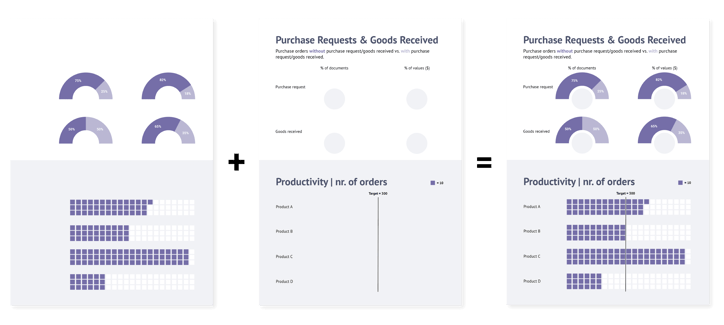 Recurring charts + Static elements = complete report
Recurring charts + Static elements = complete report
Database
Automated versioned stand-alone reports find their roots in a unique data landscape. These reports often draw from what is known as a 'static' database, typically associated with research projects or datasets that evolve slowly or remain relatively stable over time.
This static nature of the underlying data source forms the foundation for the low frequency at which versioned stand-alone reports are produced. Since the data remains consistent for extended periods, there's no need for recurrent reporting. Instead, a single report structure is crafted to accommodate distinct data sets, tailored for different categories, subjects, or regions.
In the process, data binding plays a crucial role. This involves the transformation of data from the database structure into a 'rendering' data structure, a task often accomplished using scripts. Data binding ensures that the raw data, originally stored in a database in an efficient, but often complex format, is seamlessly integrated into the report's template. Scripts, through their automated instructions, act as the intermediary, extracting data, reformatting it, and then populating the report with this newly structured data.
Conclusion
Versioned stand-alone reports are a valuable resource for businesses or organizations seeking to cater to the unique needs of different regions or market segments. These reports provide customized insights and are especially beneficial for projects that involve extensive data analysis and reporting. While their creation can be challenging due to the need for multiple versions, automation tools like Datylon's Automated Reporting solution offer an efficient and cost-effective approach, streamlining the production of these reports.
Our experience with the Woonscan project for the Province of Antwerpen demonstrated the complexity of working on automated versioned stand-alone reports, particularly when managing teams and handling diverse roles. The process requires precise style guidelines, effective data management, and clear communication to ensure a successful outcome.
If your organization seeks automated reporting for the creation of visually appealing and captivating reports, we invite you to get in touch with Datylon for a proposal or to schedule a demonstration.
Further reading
What is automated data reporting? A complete guide
Climbing the Ladder of Automated Reporting Solutions with Datylon
The Great Report Debate: Manual, Automated, or Interactive?
Automated reports: Defining Data Resources, Data Extraction and Transformation Options
Building an automated reporting solution with Datylon Report Server
Automated Data Visualization Trends: What to Look for in Report Server Tools
Automated reporting for various industries:
Revolutionizing Marketing and Media: The Power of Automated Reporting
Automated Reporting in Asset and Wealth Management: Trends and Best Practices
Boosting Efficiency: How Automated Reporting Transforms Associations
The Power of Automated Reporting in the Pharmaceutical Industry

Dieuwertje van Dijk - Data Visualization Designer
Data, graphic design, illustration, food and mountains let her dopamine neurons spark on a daily basis. Most of the year she lives in Georgia where she spends her free time enjoying nature in a rooftop tent, eating khinkali and drinking wine.

